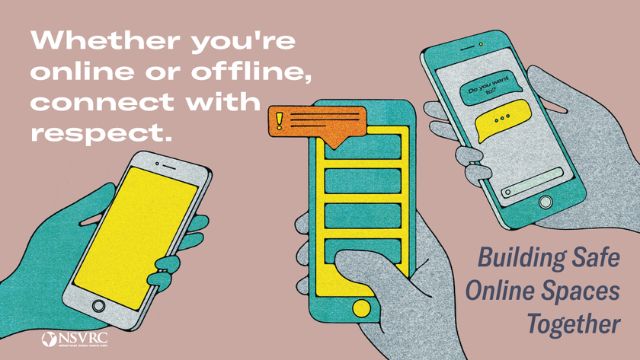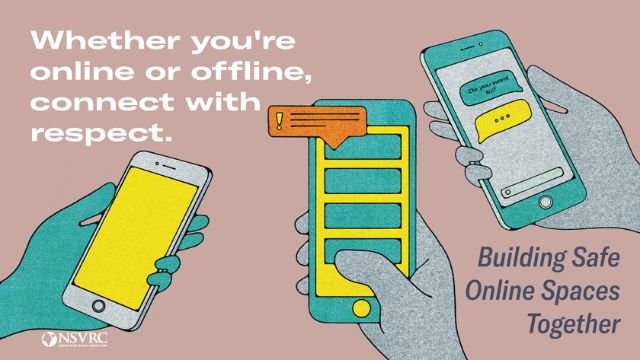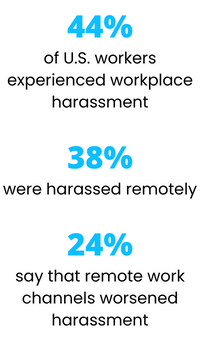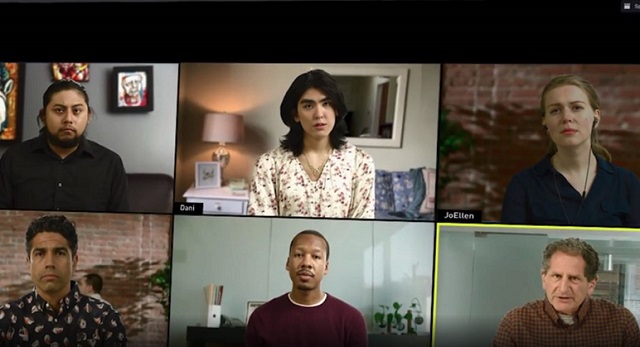Your Remote Employees Aren't Safe from Harassment

April is Sexual Assault Awareness Month
While many companies instituted training in recent years to address instances of discrimination in their workplaces (and build respectful work environments), harassment and other actionable bias-based issues continue to occur. The Equal Employment Opportunity Commission (EEOC) – the U.S. government’s agency tasked with enforcing antidiscrimination laws – reported 67,440 charges of workplace discrimination in 2020. And because many incidents go unreported, that number represents only a fraction of the real situation.¹
The pandemic sent many employees home to work, and many continue to work remotely today, so it is easy to imagine that distance might have helped lessen the occurrence of sexual, racial, and other types of employee harassment. However, research says otherwise.
In 2021, a survey by employee feedback platform creator AllVoices found that 44% of U.S. workers experienced workplace harassment of some sort (bullying, discrimination, online harassment, cyber bullying).² Nearly four in 10 (38%) were harassed remotely by telephone, email, video conferencing, or chat platforms (Slack, Teams, etc.). One in four (24%) said that remote work channels actually worsened harassment. Further, fear of retaliation, of not being believed, or concern that no action would be taken kept half of those who suffered harassment from reporting it. The study encompassed harassment based on gender, sexual orientation, race, age, socioeconomic status, and other factors.
A 2021 Pew Research Center study found that 55% of U.S. adults acknowledge that online harassment is a major problem.³ Forty-one percent said they’d experienced it personally, and nearly two-thirds of adults under the age of 30 said that they’d been harassed online. In addition, Pew’s data showed an increase in the severity of online harassment incidents.
Similarly, a U.K. study found that sexual harassment, in particular, is on the rise. Conducted by the Rights of Women, an organization that assists women with legal issues, the research revealed that 45% of women who experienced sexual harassment experienced it remotely, and that 42% of women who experienced sexual harassment at work said that some or all of it occurred online.⁴ Nearly one in four of those women (23%) reported that the harassment increased since they’d moved to remote work.
Harassment of Remote Workers Takes Many Forms
Thanks to respectful workplace and anti-harassment training courses, such as Media Partners’ How Was Your Day and Once & For All, many managers and employees know how to recognize harassment and discriminatory behavior when they see it occur on the job.
However, some find the idea of harassment that takes place virtually more difficult to understand. The Pew Research listed such general examples as:
- Physical threats
- Stalking
- Sustained harassment
- Sexual harassment
- Offensive name-calling
- Purposeful embarrassment


An employment law site adds these descriptions specifically related to sexual harassment, noting that instances may take place via email, text, chat platforms (Slack, Teams, etc.), during online meetings (Zoom, Skype, etc.), or by other electronic means:⁵
- Inappropriate images sent via messaging
- Sexts or video chats
- Sexual jokes sent via messaging
- Sexually suggestive emails
- Inappropriate website links sent
- Explicit photographs or sexual videos sent
Tracy A. Pearson, a legal and organizational behavior expert quoted by Fast Company, acknowledges that remote employees aren’t subject to physical contact by harassers, but notes that “criticism, unfair work conditions, suggestive commentary, and microaggressions” that occur when an individual is working in a setting they normally view as safe (such as their homes) may be especially damaging.⁶
An example offered in Media Partners’ Unintentional Still Hurts (an unconscious bias training course) demonstrates what an actual instance of remote harassment might look like in a scene involving a remote transgender employee participating in a Zoom meeting.
Decisive Action By Employees Is Called For
Employers must act purposefully to address instances of discrimination and harassment that occur in their physical workplaces. They must do the same when those negative behaviors happen in the remote work environment. The following are important actions employers can take to ensure safe working conditions for remote (and on-site) employees:
- Establish/strengthen an organizational culture that emphasizes respect and equity for all. This includes formal values that support inclusion and regard for every employee and encouragement that all bystanders become upstanders by speaking up for others when misconduct is observed.
- Review company policies and procedures to ensure that respectful conduct (and consequences for violations) specifically apply to all work settings, whether on-site in company facilities or remote.
- Create and communicate clear procedures for victims or observers to report instances of misconduct and for managers or other appropriate officials to take action.
- Frequently talk about the organization’s commitment to respect, equity, and inclusion. Hold leaders at all levels accountable for doing so and for modeling respectful behavior.
- Provide training to employees, managers, and leaders to identify and respond constructively and immediately to inappropriate behavior across all work settings. Initial training should take place at time of hire with ongoing updates and reinforcing courses presented at least annually.
- Act immediately to investigate all complaints of harassment and discrimination. Take any necessary action to protect victims (including protection from potential retaliation) and to address inappropriate behavior.
Media Partners’ mission is to help build workplaces where all employees feel respected, safe and fully engaged. A positive work culture is not only good for people, it’s good for business. We believe that achieving meaningful culture change is a journey – one taken by individuals and the organization itself. Our solutions and services pave the way.
RELATED TRAININGS

Once & For All: Stopping Sexual Harassment At Work is the most effective training for inspiring immediate behavior change and building a culture of respect... and is the only program with a compliance guarantee.

Unintentional Still Hurts: Overcoming Unconscious Bias covers intent vs. impact and how to handle microaggressions (whether you are the perpetrator, the target or an observer).

How Was Your Day? is our 9-time award-winning respectful workplace awareness course. It takes a uniquely non-threatening approach to helping people understand and reflect on unconscious bias, and diversity & inclusion.
Image: https://www.nsvrc.org/saam
¹ https://www.eeoc.gov/newsroom/eeoc-releases-fiscal-year-2020-enforcement-and-litigation-data
² https://www.allvoices.co/blog/the-state-of-workplace-harassment-2021
⁵ https://www.employmentlawhelp.org/sexual-harassment/examples-remote-harassment
⁶ https://www.fastcompany.com/90694967/why-remote-work-hasnt-cut-down-on-workplace-harassment







